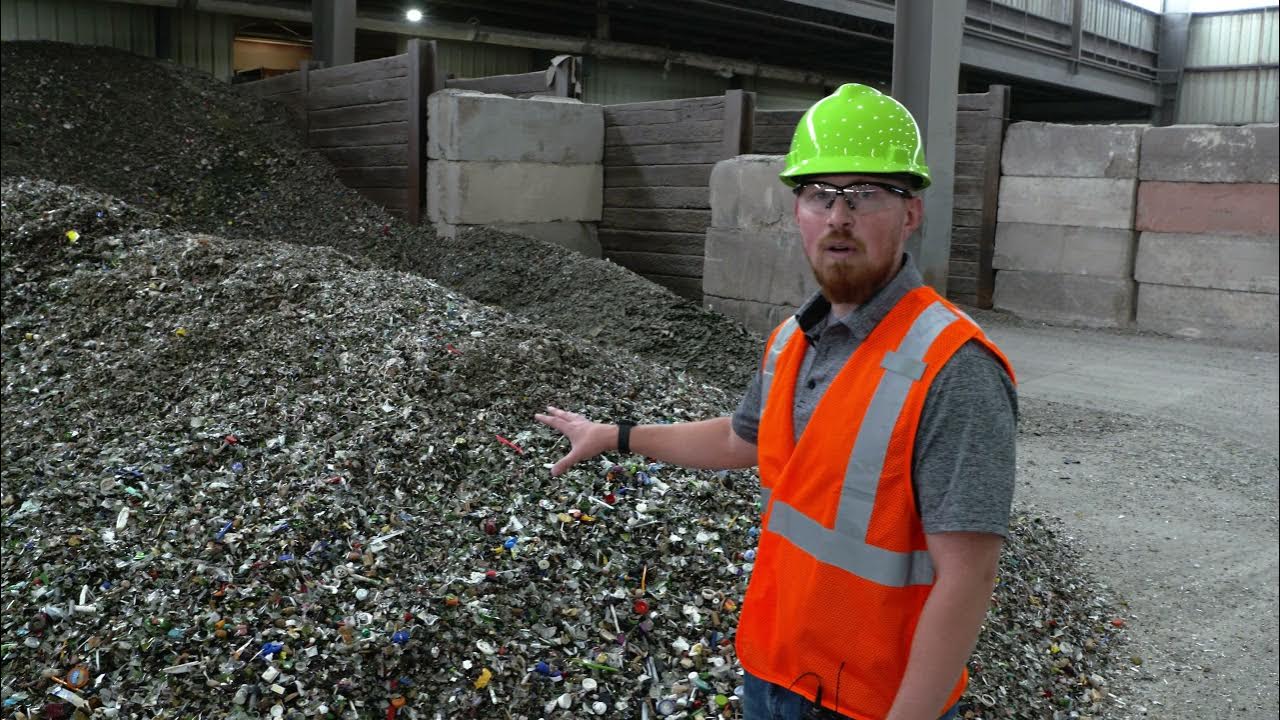Amazing Float Glass Production Process - Glass Manufacturing
Summary
TLDRThe video outlines the intricate process of glass manufacturing, starting from raw materials like sand, lime, and dolomite, to the recycling of glass, which reduces energy consumption and CO2 emissions. It describes the careful mixing, melting, and forming of glass at high temperatures, followed by cooling and annealing to relieve internal stresses. Quality control is emphasized, with automated systems ensuring defect-free products. The process culminates in cutting and stacking perfectly transparent glass sheets, ready for storage or shipment, showcasing the efficiency and precision of modern glass production.
Takeaways
- 🌍 The glass manufacturing process starts with abundant raw materials, including sand, lime, dolomite, soda, and cullet.
- ♻️ Recycling glass is crucial as it reduces the need for new raw materials and lowers energy consumption.
- 📏 The batch of raw materials must be carefully mixed for optimal quality, ensuring homogeneity before melting.
- 🔥 Glass is melted at high temperatures (1550 to 1600°C), where heat transfer and chemical reactions create bubble-free molten glass.
- 🛠️ Continuous monitoring of the melting process is essential to maintain high-quality standards in the glass production.
- 🏊 After melting, the glass flows into a float bath of molten tin, where it spreads out to form a uniform ribbon.
- 🔧 The thickness and width of the glass ribbon are controlled through top rolls and exit speed adjustments.
- ❄️ The glass ribbon undergoes a gradual cooling process to relieve internal stresses, which is critical for quality.
- 👀 Advanced optical systems check for defects during production to ensure only high-quality glass sheets are cut.
- 📦 Final glass sheets are prepared for dispatch, either to storage or directly to customers, demonstrating efficiency in the production line.
Q & A
What are the primary raw materials used in glass manufacturing?
-The primary raw materials for glass manufacturing are sand, lime, dolomite, soda, and sulfate.
How does recycling glass contribute to the manufacturing process?
-Recycling glass reduces the need for raw materials, accelerates the melting process, limits energy consumption, and lowers CO2 emissions.
What is the significance of the batch in glass production?
-The batch consists of the mixed raw materials used for melting, and its precise formulation determines whether the final glass product will be transparent or colored.
At what temperature does the glass melting occur, and why is this important?
-Glass melting occurs at temperatures between 1550 and 1600 degrees Celsius, which is essential for ensuring high-quality glass free of bubbles through chemical reactions.
Describe the float bath process in glass manufacturing.
-In the float bath process, molten glass flows onto molten tin, allowing it to spread and form a continuous ribbon of flat glass, achieving perfect flatness.
What role do technicians play in the melting process?
-Technicians monitor the melting process continuously, taking measurements and adjusting parameters to optimize thermal balance and efficiency.
What is the purpose of annealing in glass production?
-Annealing is a critical step where the glass is gradually cooled to relieve internal stresses and prevent splitting, ensuring better cutting quality.
How is quality control maintained during the production of glass sheets?
-Quality control is maintained through a high-performance optical system that continuously checks for defects in the glass ribbon during production.
Explain the two-step cutting process for glass sheets.
-The two-step cutting process involves creating longitudinal stripes with a diamond wheel and then snapping the ribbon along these stripes to form standard-sized glass sheets.
What happens to the glass sheets after they are cut?
-After cutting, the glass sheets are automatically stacked into calibrated piles and then offloaded using special handling machines for storage or shipment.
Outlines

Esta sección está disponible solo para usuarios con suscripción. Por favor, mejora tu plan para acceder a esta parte.
Mejorar ahoraMindmap

Esta sección está disponible solo para usuarios con suscripción. Por favor, mejora tu plan para acceder a esta parte.
Mejorar ahoraKeywords

Esta sección está disponible solo para usuarios con suscripción. Por favor, mejora tu plan para acceder a esta parte.
Mejorar ahoraHighlights

Esta sección está disponible solo para usuarios con suscripción. Por favor, mejora tu plan para acceder a esta parte.
Mejorar ahoraTranscripts

Esta sección está disponible solo para usuarios con suscripción. Por favor, mejora tu plan para acceder a esta parte.
Mejorar ahora5.0 / 5 (0 votes)






